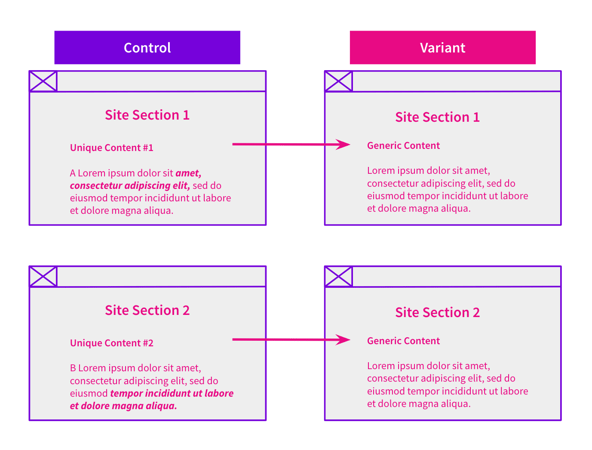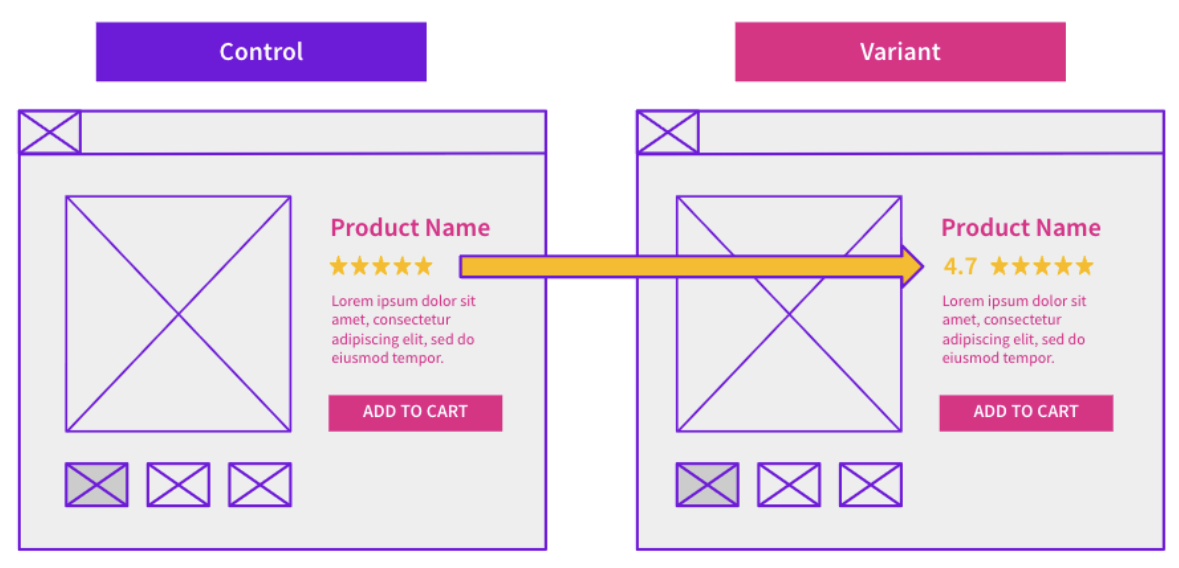Start here: how our SEO split tests work
If you aren't familiar with the fundamentals of how we run controlled SEO experiments that form the basis of all our case studies, then you might find it useful to start by reading the explanation at the end of this article before digesting the details of the case study below. If you'd like to get a new case study by email every two weeks, just enter your email address here.
This week's #SPQuiz, we tested replacing a paragraph of unique content to the page with a generic default. We wanted to measure the value of creating unique content and ran this as 16 separate tests across site sections.
Here’s what our LinkedIn and Twitter followers thought this SEO test result could be.
LinkedIn Poll
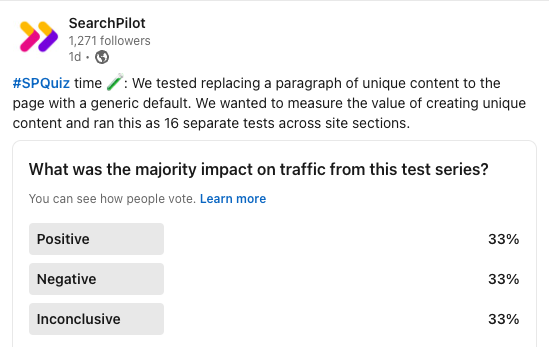
It's an even split of what the test result would be from our LinkedIn followers.
Twitter Poll
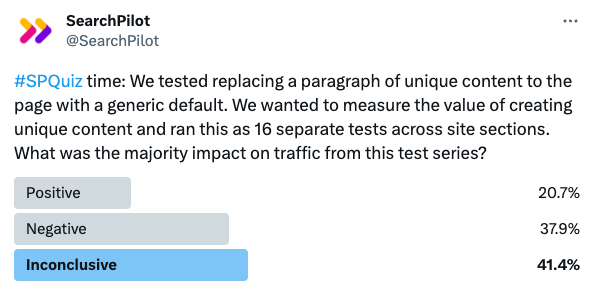
Most of our Twitter/X followers believed the result would be inconclusive.
The Case Study
If you’re familiar with SEO, you will have heard that unique content is a valuable part of SEO strategy, and it’s really important to have as much unique content on your site as possible. But exactly how valuable is it? It’s important to weigh the costs of this effort because creating unique content at scale can be incredibly costly and time consuming.
What was changed
A SearchPilot customer in the travel industry wanted to verify this value before investing in a large-scale expansion of their unique content across thousands of landing pages.
They did this by testing the inverse, replacing unique content that already existed across a section of the site with “default” content that would be replicated across a subset of pages. They ran this test on 16 different site sections across six international domains.
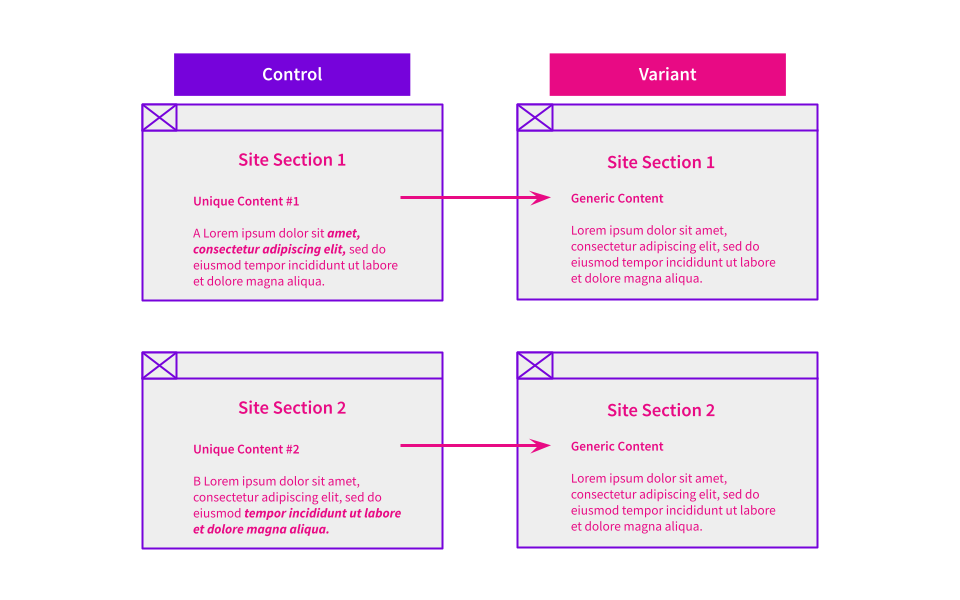
Results
As we often see when we run the same test across multiple sites and page types, we saw a range of results, but the vast majority (12 of the 16 tests) were inconclusive. Of the remaining four, three were positive, and one was negative.
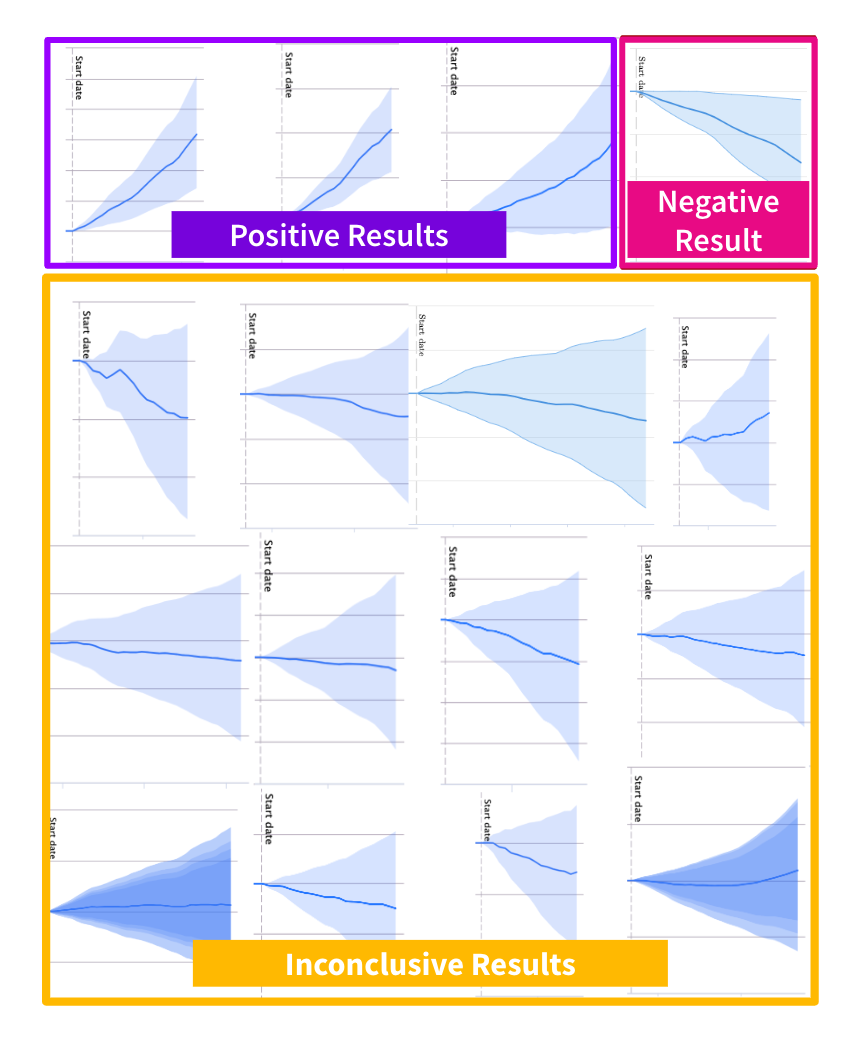
Across a range of domains and page templates, only one of the sixteen tests resulted in a statistically significant negative result. This was quite odd to see as it suggests the ‘default’ content either outperformed or didn’t result in any significant change to organic traffic compared to the unique content. Further suggesting that in this case, there wouldn’t be much value to dedicating resources for creating personalised content.
The customer used this information to reallocate resources away from creating more unique content for this type of landing page.
How our SEO split tests work
The most important thing to know is that our case studies are based on controlled experiments with control and variant pages:
- By detecting changes in performance of the variant pages compared to the control, we know that the measured effect was not caused by seasonality, sitewide changes, Google algorithm updates, competitor changes, or any other external impact.
- The statistical analysis compares the actual outcome to a forecast, and comes with a confidence interval so we know how certain we are the effect is real.
- We measure the impact on organic traffic in order to capture changes to rankings and/or changes to clickthrough rate (more here).
Read more about how SEO testing works or get a demo of the SearchPilot platform.
